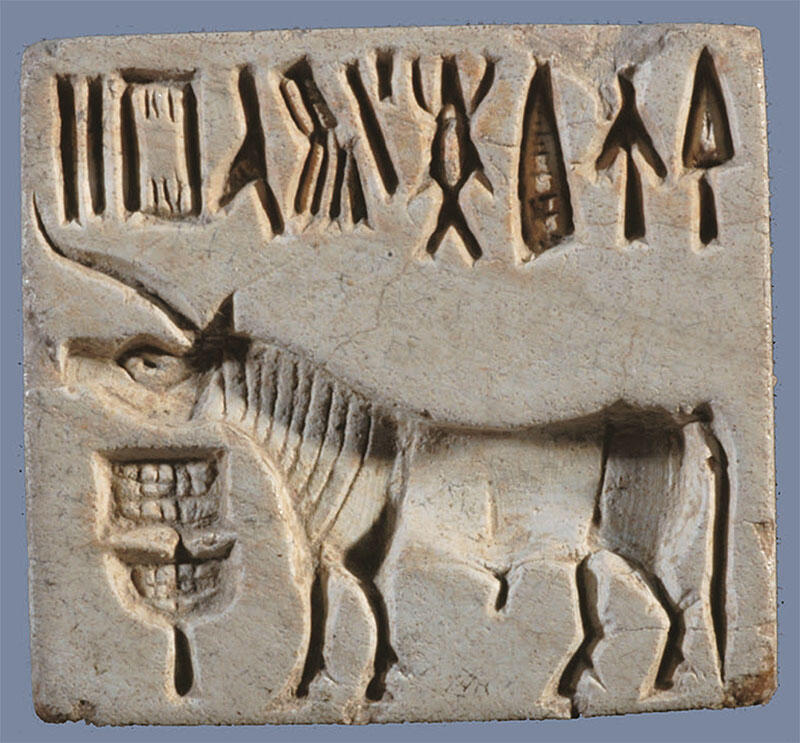Although much about Indus seals remains unknown, the steady application of rigorous, detailed analysis of a kind that earlier excavators could hardly dream of is slowly yielding clues and insights into the organization of work and craft in Indus cities, with implications for how these cities were run and related to each other. “This paper summarizes the results of my dissertation research on variability in Indus unicorn seal carving styles and what it tells us about sociopolitical organization and control,” writes Gregg M. Jamison. Indeed, his analysis “supports what Kenoyer (1994, 1997, 1998, 2000, 2008) and others (Wright 2010) have said for a long time: the Indus was organized and integrated as a decentralized socio-political system that was unique during the 3rd millennium BC. “
How and why this is true is an example of truly fine detective work, made possible in part by something Jamison’s former teacher Mark Kenoyer has been one of the pioneers of: working with modern craftsmen to understand the step-by-step production sequences necessary to make modern versions of ancient goods, and use the understanding so gained to examine – microscopically in this case – the original objects.
Jamison writes, “An approach that focuses on the chainé operatoiré of specialized craft production and its material signatures in the archaeological record allows one to investigate issues relating to scale and control that can be evaluated independently of written records.” In this case modern steatite artisans in Udaipur city were recruited to replicate Indus seals using tools familiar to ancient Indus craftsmen; the resulting studies of how they each went about it yielded a wealth of data on sequence and individual carving styles. This variability led to specific “visual signatures” that were then examined for and elicited from careful study of original unicorn seals. The specific elements of 180 original unicorn seals – eye, ear, pizzle, hoof, head, standard, etc. – yielded revealing similarities and distinctions in how they were carved and represented.
The results show distinct regional – indeed, urban and settlement. Amazingly, enough can be inferred from stratigraphic analysis from Harappa to help date specific seals to specific times because of how elements were represented commonly at certain periods (specific styles came and went). Jamison writes:“These inferences allowed me to investigate whether some of the seal groups I identified were contemporary and therefore represent distinct carving styles produced by multiple artisans, or if they represent synchronic changes in unicorn seal production throughout the Indus as a whole. Using the seal chronology as a comparative tool also allowed me to evaluate whether similar patterns in carving styles were present at other sites. The results of my study indicate that the changes in unicorn seals at Harappa can also be seen at other sites, and this can be tested in the future as more seals from reliable stratigraphic contexts are recovered and published. “
In one case, he offers compelling evidence that three seals from Mohenjo-daro were likely carved by the same craftsmen. In other cases, regional styles in Lothal and Bagasra are highlighted. A tour-de-force of hard work, patience and insight, one has the feeling from Jamison’s work that we are only at the beginning of what this kind of fine-combed research across eras and disciplines can yield. Like Randall Law’s work with raw material networks, or Sharri Clark’s analysis of figurines (both also students of Kenoyer), this kind of meticulous research across large groups of objects reminds us of how much can still be discovered in things already unearthed from the ancient Indus civilization. Many Indus secrets are already above ground, waiting for the detectives.
Above: Unicorn Seal from Bagasra (Gujarat), C Department of Archaeology and Ancient History, The Maharaja Sayajirao University of Baroda.

